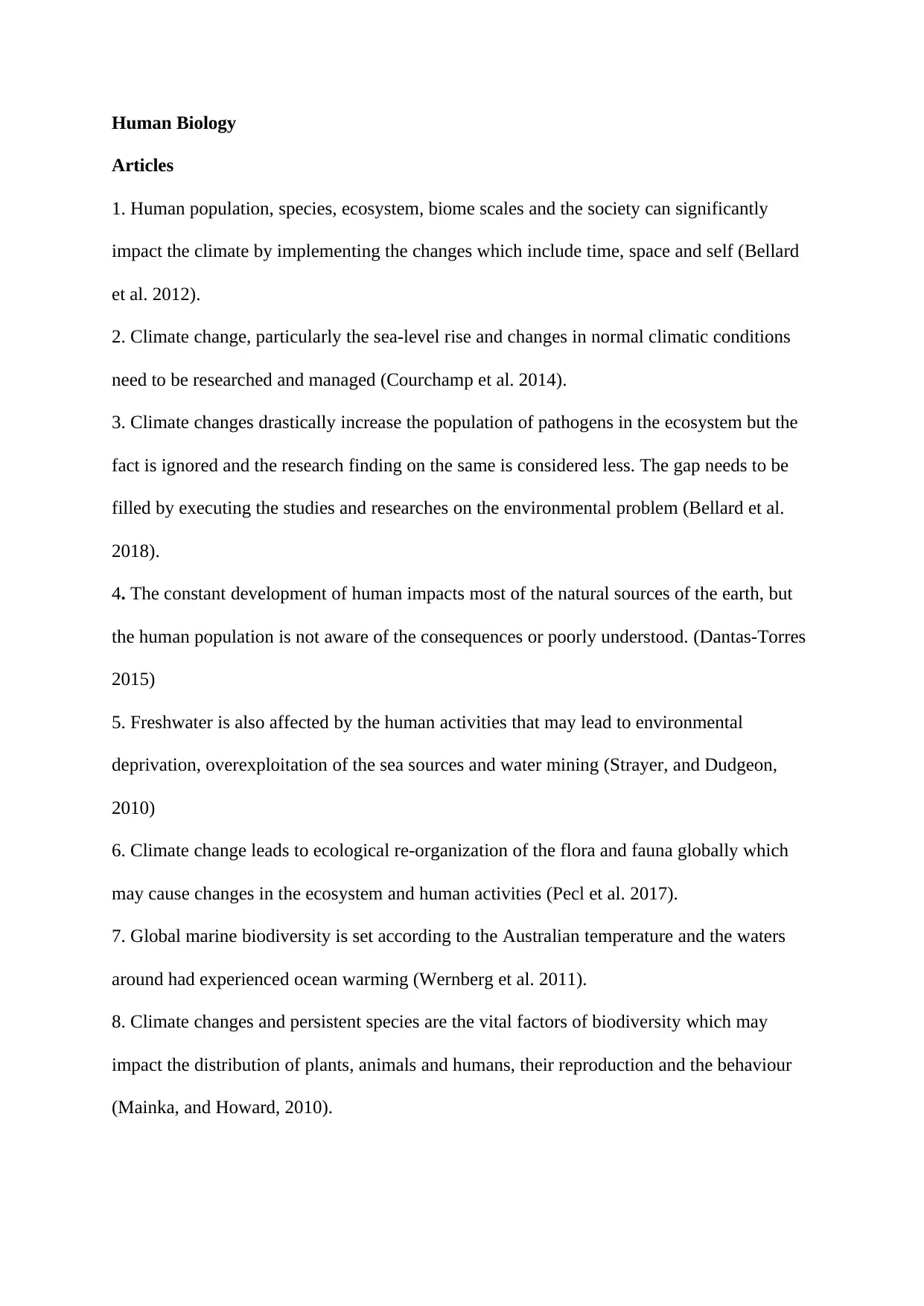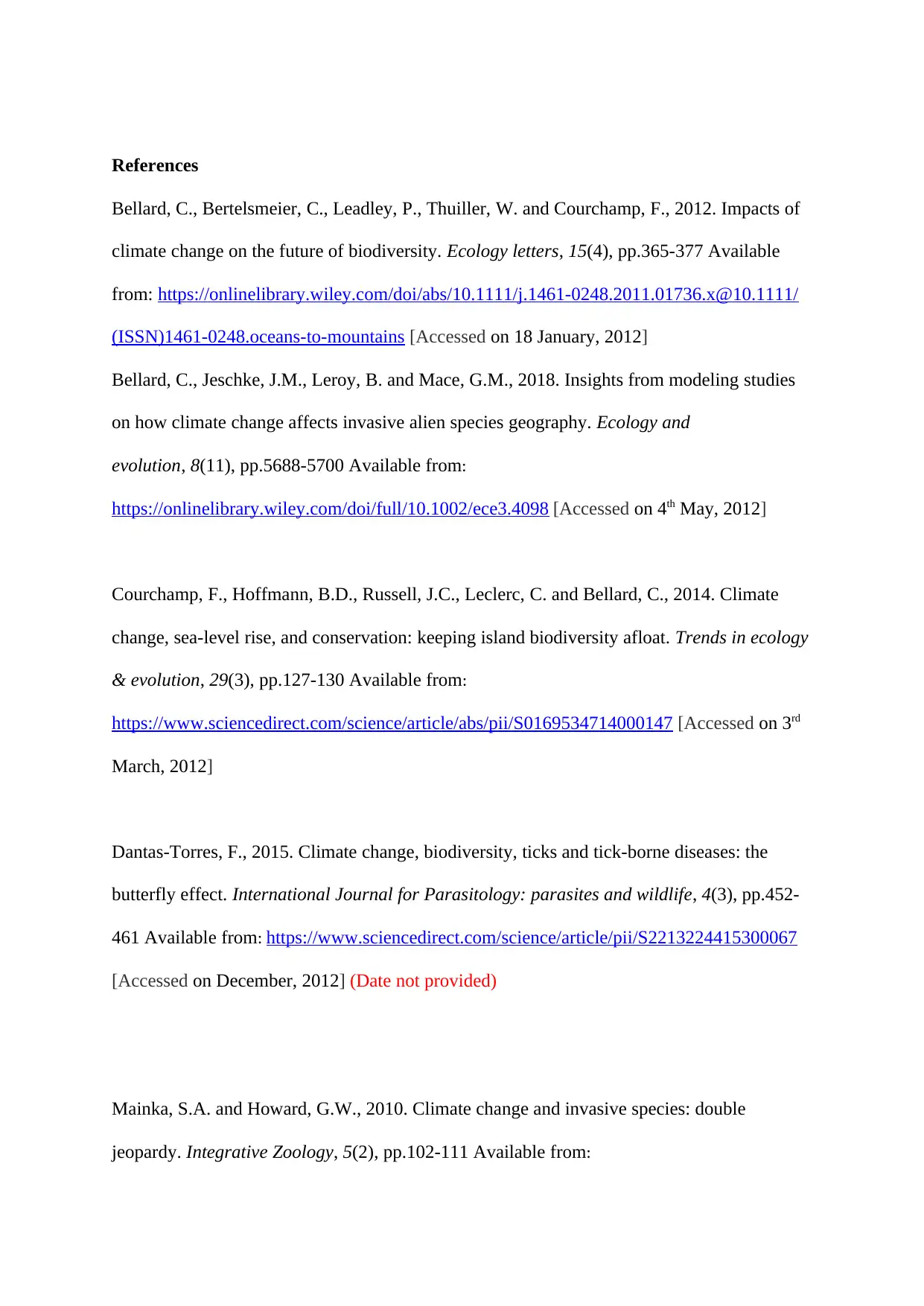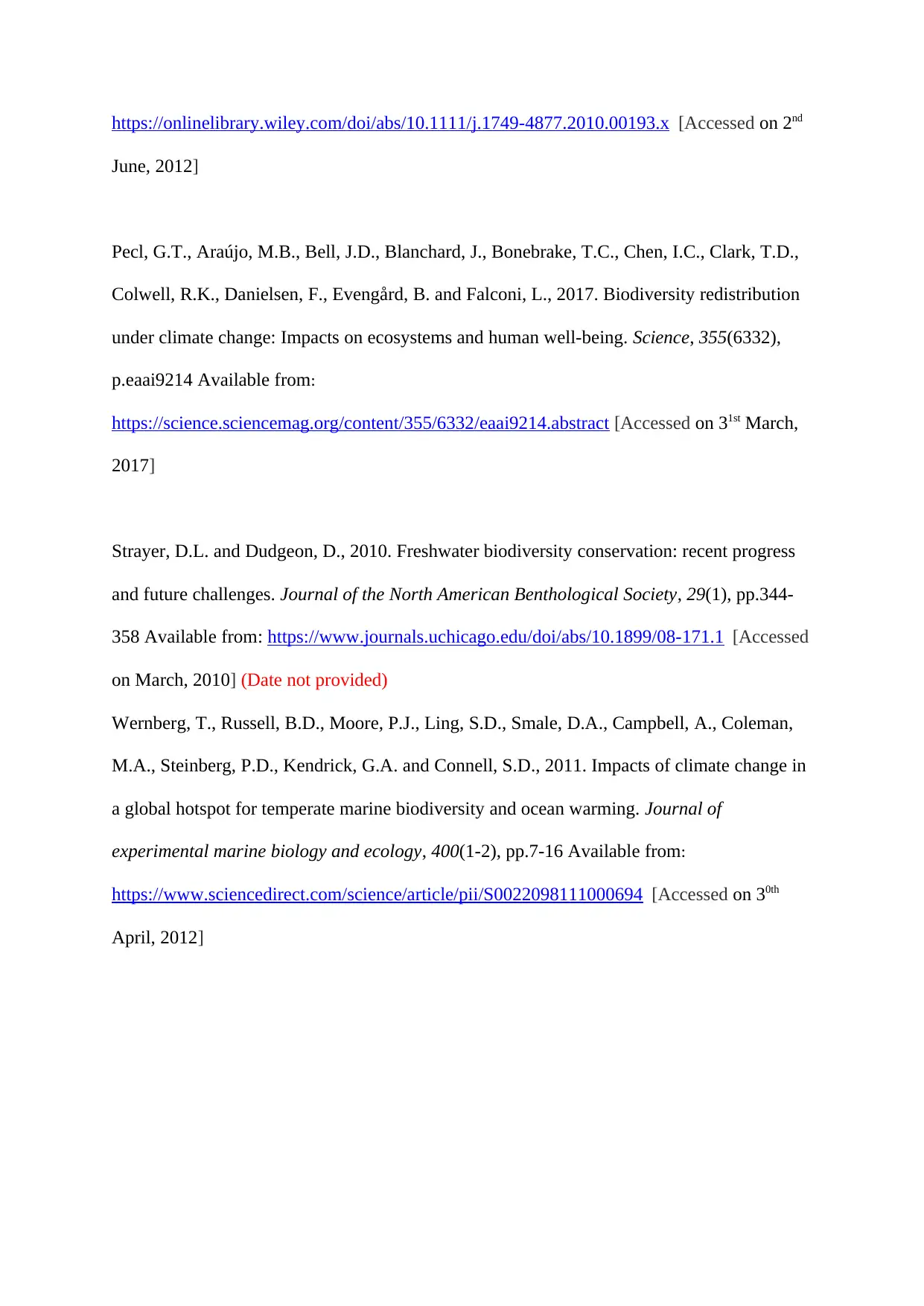Human Biology Assignment: Climate Change, Species, and Ecosystems
VerifiedAdded on 2022/09/12
|3
|786
|25
Homework Assignment
AI Summary
This homework assignment provides a concise overview of the impact of climate change on various aspects of human biology, drawing from multiple research articles. It explores how climate change influences human populations, species distribution, ecosystems, and biodiversity. The assignment highlights the importance of understanding and managing climate change impacts, including sea-level rise, shifts in pathogen populations, and the consequences of human development on natural resources, particularly freshwater. The ecological reorganization of flora and fauna globally, the effects on marine biodiversity, and the impact on the distribution and behavior of plants, animals, and humans are also discussed. The assignment emphasizes the need for further research and awareness of the environmental consequences of human activities.
1 out of 3





![[object Object]](/_next/static/media/star-bottom.7253800d.svg)